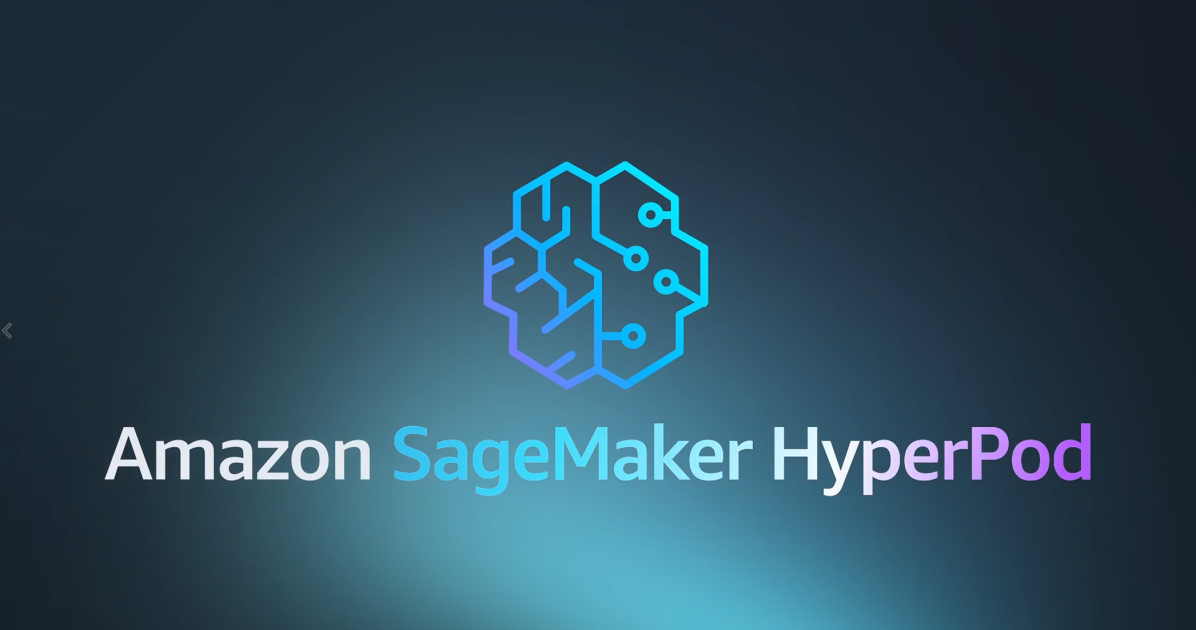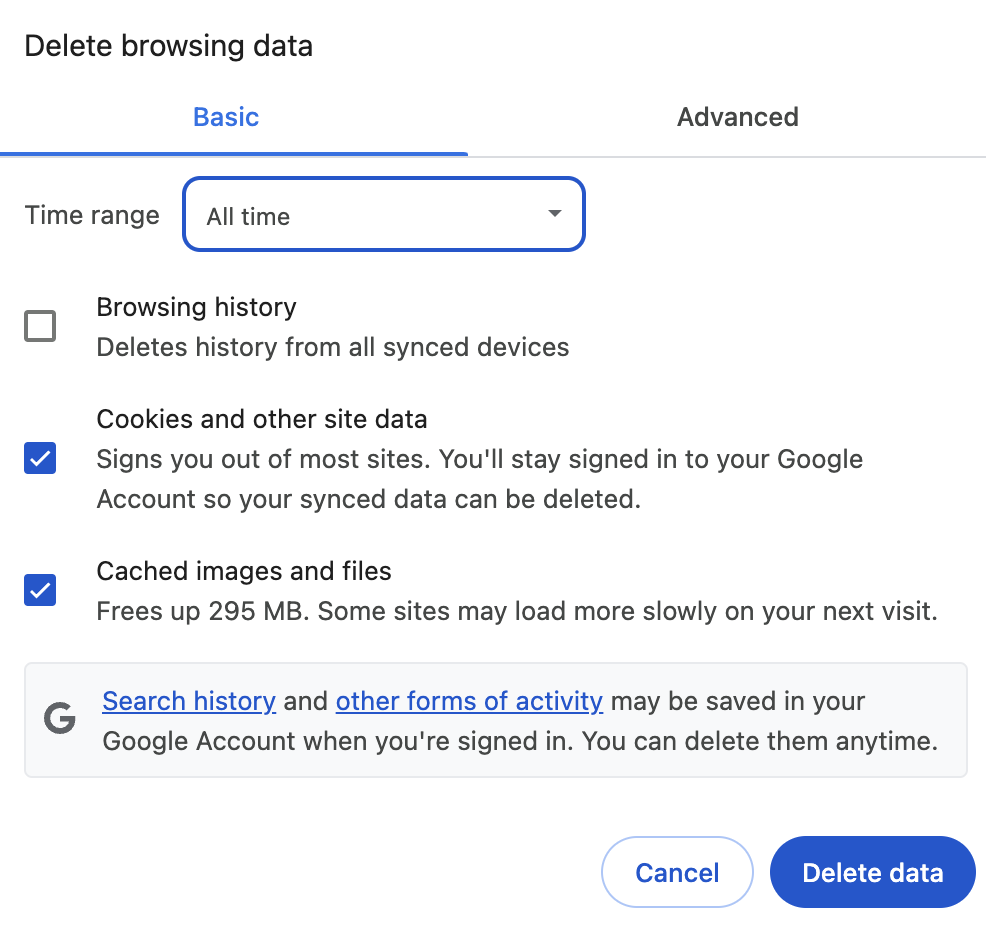
Not long ago, building with LLMs meant picking one general-purpose model and sticking with it. Today, the landscape is flooded with thousands of options: large and small, open and closed-source, generalist and specialist, each with unique capabilities and costs.
This explosion of choice has fundamentally changed how we build AI applications. The one-size-fits-all approach is over.
Instead, we architect systems that select the best model for each task. This is the idea behind model routing. This architectural pattern can be implemented today, and has the potential to change the economics of model inference. Let’s get into it!
As a developer building with LLMs, you’re constantly juggling three competing priorities: performance, cost, and latency.
- Performance (Quality): For complex reasoning and creative generation, you might reach for state-of-the-art models like Google’s Gemini 2.5 Pro. These models deliver high-quality, accurate responses.
- Cost: While premium models deliver state-of-the-art performance, they represent a significant investment. The key to a sustainable AI strategy is to reserve these powerful models for tasks where their advanced capabilities provide a clear return on investment. For more routine queries, smaller, highly efficient models can deliver excellent results at a fraction of the cost. Recent studies show this approach can yield cost savings without significantly degrading performance.
- Latency: In interactive applications like chatbots, a fast response time is critical for a positive user experience. Smaller, specialized models can deliver near-instantaneous responses, making them ideal for real-time, conversational AI. By routing interactive queries to these faster models, you can create a more engaging and responsive application.
Relying on a single model forces an unnecessary compromise. Use a top-tier model for everything, and you pay a premium for power you don’t always need. Use a smaller model for everything, and you sacrifice quality on complex queries. So why are we still forcing ourselves to choose just one?
Model routing is an architectural pattern designed to solve this optimization problem. It involves maintaining a pool of candidate LLMs and routing each incoming prompt to the most suitable model. That’s often the smallest, fastest, and most cost-effective model that can successfully complete the task.
Implementing a model router involves choosing an architectural pattern that determines how routing decisions are made. These patterns exist on a spectrum of complexity and intelligence, from simple, predefined rules to sophisticated, AI-driven classification. We will focus on dynamic routing patterns that assess the content, intent, and complexity of the prompt to select the optimal model.
This is the simplest form of dynamic routing. It uses hard-coded logic, typically a series of if/else statements, to make routing decisions based on simple characteristics of the prompt.
The rules are based on easily measurable attributes of the prompt, such as the presence of certain keywords, its overall length, or matches against regular expressions. For instance, a system might check for specific terms to identify a task category or measure the prompt’s length to estimate its complexity.
- Pros: This approach is predictable, transparent, and fast to execute. It’s an excellent choice for well-defined, simple workflows where task categories can be reliably distinguished by straightforward heuristics.
- Cons: Rule-based systems are brittle and inflexible because they lack a true understanding of language. They can be easily confused by semantic nuance, such as negation or context. The system also becomes difficult to maintain and scale as the number of rules grows.
This pattern leverages the intelligence of an LLM to perform the routing task itself. A dedicated, often smaller and faster, “router LLM” acts as a classification engine.
The user’s prompt is fed into the router LLM. The router LLM is given a prompt that instructs it to analyze the query and classify it into predefined categories. To ensure the output is machine-readable, the router LLM is instructed to respond in a structured format like JSON. The application then parses this JSON output to determine which model to call next.
- Pros: This is a powerful and flexible approach. The router LLM can understand complex, ambiguous, and nuanced language. It can handle multi-intent queries and can be adapted to new routing tasks simply by updating its system prompt.
- Cons: The primary drawback is significant overhead. This method introduces an additional, full LLM API call into the critical path of every request. This adds both cost and latency, which can undermine the goals of optimization the router was intended to achieve.
Semantic routing offers a powerful compromise, combining the speed of rule-based systems with the intelligence of LLM-based approaches. It operates on the principle of semantic similarity in vector space and is the core mechanism we’ll implement.
The process involves four steps. First, routes are defined, each with a name and a list of representative example phrases, or utterances. Next, a text embedding model converts all of these utterances into high-dimensional numerical vectors that capture their semantic meaning, which are then stored in an efficient index. When a new user query arrives, the same embedding model converts it into a vector. Finally, a vector similarity search is performed between the query’s vector and all the utterance vectors in the index, and the route whose utterances are most similar to the query is selected as the winner.
- Pros: This method is fast, with decision times often in the milliseconds, because it relies on optimized vector math rather than a slow, generative LLM call. It’s highly scalable to thousands of potential routes and is more robust than simple keyword matching because it understands meaning and context. Modern libraries often allow this configuration to be externalized into declarative files like YAML, separating the routing logic from the application code for better maintainability.
- Cons: The effectiveness of a semantic router is highly dependent on the quality and comprehensiveness of the example utterances provided for each route. It can also struggle with contextual, multi-turn conversational queries where the user’s intent is not explicitly stated in their most recent message.
The choice of routing architecture is governed by the “Router Latency Paradox”: a component designed to reduce overall application latency must itself be exceptionally low-latency. An LLM-based router introduces a full inference step to every request, increasing both latency and cost. For this approach to be a net positive, the downstream savings must consistently outweigh its operational overhead, which is a high bar for most interactive applications. Semantic routing, in contrast, replaces this slow inference with a near-instantaneous vector search. This performance difference establishes semantic routing as the default architectural best practice for dynamic, real-time model routing. LLM-based routing is thus reserved for cases where the routing logic is too complex to be captured by semantic similarity alone and the added latency is an acceptable trade-off.
To build an effective router, you need a solid grasp of the candidate models in your pool. For our implementation, we’ll use Google’s Gemini 2.5 family, a suite of models with a tiered structure of capability and cost that’s perfect for a routing architecture.
A key innovation across the Gemini 2.5 family is their capability as “thinking models.” This means they can be configured to perform internal reasoning steps, akin to a chain of thought, before generating a final response. This feature, controllable via an API parameter known as the “thinking budget,” can significantly improve performance and accuracy on complex tasks. This controllable reasoning becomes another powerful dimension for our routing logic to consider.
- Capabilities: Gemini 2.5 Pro is Google’s flagship model, engineered for maximum performance and state-of-the-art accuracy. It’s optimized for the most complex and demanding tasks, including deep logical reasoning, advanced code generation, and sophisticated multimodal understanding across text, images, audio, and video.
- Router Use Case: This is our designated “strong” model. We’ll route only the most challenging queries here: prompts that involve complex problem-solving, novel algorithm design, in-depth analysis of dense technical documents, or multi-step logical puzzles.
- Thinking: For this model, the “thinking” capability is on by default, as it’s integral to its high-end performance.
- Capabilities: Gemini 2.5 Flash is designed to be the best model in the family in terms of its price-to-performance ratio. It offers well-rounded, powerful capabilities that approach those of Pro but at a significantly lower operational cost. It also features a controllable thinking budget.
- Router Use Case: This is our “default” or “go-to” model. It’s the workhorse that will handle the majority of general-purpose queries. These are tasks that are more complex than simple classification but don’t require the full power (and expense) of Pro. Ideal use cases include general conversation, creative writing, drafting emails, and performing detailed summarizations.
- Capabilities: As its name suggests, Gemini 2.5 Flash-Lite is the fastest and most cost-efficient model in the 2.5 family. It’s highly optimized for low latency and high-throughput scenarios, making it a cost-effective upgrade from previous generations of Flash models.
- Router Use Case: This is our fastest model. We’ll route simple, high-volume, and latency-sensitive tasks here. It’s perfect for text classification (e.g., sentiment analysis), simple data extraction (e.g., pulling names and dates from text), translation, and answering straightforward factual questions.
- Thinking: To maximize its speed and cost-efficiency, “thinking” is turned off by default for Flash-Lite. However, it can be optionally enabled, providing granular control for tasks that might need a small boost in reasoning without escalating to the full Flash model.
With the theory covered, let’s get to the code. This section walks through the gemini-model-router project, which builds a semantic router to intelligently distribute queries among the Gemini 2.5 Pro, Flash, and Flash-Lite models. It uses the open-source semantic-router library as its engine and serves it all up with FastAPI.
To get started, clone the repository and follow the setup instructions in the README.md file, which covers creating the .env file and installing the required dependencies from requirements.txt.
A key architectural decision in the gemini-model-router project is the separation of configuration from code. All routing logic, including the routes, their representative utterances, and the specific LLM assigned to each route, is defined in a single router.yaml file. This makes the system highly maintainable and easy to modify without changing the application’s Python code.
The router.yaml file has two main sections:
- encoder: Specifies the embedding model to use for converting text to vectors. In this case, it uses Google’s
gemini-embedding-001via the semantic-router’sGoogleEncoder. - routes: A list of route definitions. Each route has:
name: A unique identifier that maps directly to a Gemini model.description: A human-readable explanation of the route’s purpose.utterances: A list of example phrases that define the semantic space of the route.llm: An object specifying the custom class (GoogleLLM), the Python module where it’s defined (main), and the target model ID (e.g.,gemini-2.5-pro).
Here is a snippet from the router.yaml file, defining the route for complex queries. A key parameter in the full configuration is the score_threshold. When the router compares a query to its routes, it calculates a similarity score. By setting the threshold to 0.0, we ensure that the router always selects the route with the highest similarity, effectively guaranteeing that a decision is always made.
# router.yaml
encoder_name: gemini-embedding-001
encoder_type: google
routes:
- name: gemini-2.5-pro
description: For complex, multi-step tasks requiring deep reasoning, code generation, and analysis of large documents.
utterances:
- Develop a comprehensive, multi-year business plan for a direct-to-consumer sustainable
fashion brand, including financial projections and marketing strategies.
- Write a Python script to perform sentiment analysis on a large CSV of customer
reviews, generate visualizations, and create a summary report.
- Compare and contrast the philosophical implications of determinism and free will
in the context of advanced artificial intelligence, citing relevant academic sources.
llm:
module: main
class: GoogleLLM
model: gemini-2.5-pro
#... other routes for flash and flash-lite follow...
The main.py file contains the FastAPI application that serves the router. It includes several key components that work together to bring the YAML configuration to life.
The GoogleLLM Wrapper
The semantic-router library requires a compatible LLM object for each route. To integrate with Google’s GenAI SDK, the project defines a custom GoogleLLM class that inherits from semantic_router.llms.BaseLLM. This class acts as a bridge, translating the semantic-router’s call signature into an asynchronous request to the Vertex AI Gemini API.
# main.py (simplified)
from semantic_router.llms import BaseLLM
from google import genaiclass GoogleLLM(BaseLLM):
_client: ClassVar[Optional[genai.Client]] = None
@classmethod
def get_client(cls) -> genai.Client:
if cls._client is None:
project_id = os.getenv("GOOGLE_CLOUD_PROJECT")
cls._client = genai.Client(vertexai=True, project=project_id)
return cls._client
async def __acall__(self, messages: List[Message], **kwargs) -> Optional[str]:
contents = kwargs.get("multimodal_contents", messages[0].content)
config = kwargs.get("config", self.kwargs.get("config", {}))
response = await self.get_client().aio.models.generate_content(
model=self.name,
contents=contents,
**config,
)
return response.text if response else ""
The /query Endpoint
The main API endpoint uses a series of helper functions to route and execute the query. The handle_query function orchestrates the process: it extracts text for routing, determines the best route, and executes the LLM call.
# main.py (simplified)
@app.post("/query", response_model=RouterResponse)
async def handle_query(request: QueryRequest, fastapi_request: Request):
router = fastapi_request.app.state.router
default_route = fastapi_request.app.state.default_route_name# 1. Extract text and determine the route
text_for_routing = _get_text_for_routing(request.contents)
route_choice = _determine_route(router, text_for_routing, default_route)
chosen_route = router.get(route_choice.name)
# 2. Execute the call using the LLM from the chosen route
model_response = await _execute_llm_call(
chosen_route, request.contents, request.config, text_for_routing
)
return RouterResponse(
route_name=chosen_route.name, model_response=model_response
)
While FastAPI’s web server uvicorn is perfect for local development, a production deployment requires a robust, scalable hosting environment. Cloud Run is an ideal choice for this service because it’s a fully managed, serverless platform that takes your containerized application (including the Uvicorn server) and handles all the underlying infrastructure, scaling, and request management.
To deploy the router, you first need to have the Google Cloud SDK installed and configured. Then, you can deploy the service with a single command:
gcloud run deploy gemini-model-router \
--source . \
--region us-central1
This command builds a container from your source code, pushes it to the Artifact Registry, and deploys it as a public-facing service. Cloud Run handles all the infrastructure, so you can focus on the application logic.
Deploying a model router to production requires building an observable and resilient system. An API management platform like Google Cloud’s Apigee can serve as a unified and secure gateway to your model routing service. It can provide essential capabilities like enforcing security policies, managing traffic with rate limiting and quotas, and offering deep visibility through analytics and monitoring. Let’s review the key principles needed to move beyond a proof-of-concept.
First, treat the router as a mission-critical, standalone service. Because it can be a single point of failure and a performance bottleneck, it must be independently scalable and fault-tolerant. Containerize the router and deploy it on a platform like Cloud Run to ensure high availability, allowing it to scale independently of the applications that consume it.
Second, you cannot optimize what you cannot measure. Implement comprehensive logging and monitoring for every routing decision. For each request, log the chosen route, similarity score, final model, latency, and estimated cost. This data can be fed into Google Cloud’s observability suite to create dashboards for tracking key performance indicators like route distribution, cost per query, and P99 latency. This allows you to set up alerts for anomalies, such as a sudden shift in routing patterns or an increase in fallback rates.
Third, the initial configuration is just a starting point. True optimization requires a data-driven feedback loop. Collect and review production queries to identify misrouted requests, and use this analysis to refine your route utterances. A/B testing frameworks are invaluable for comparing different routing strategies or model configurations in a live environment to validate improvements.
Finally, enterprise-grade reliability requires planning for failure. Implement a chain of fallbacks that goes beyond a simple default route. For instance, if a request to gemini-2.5-pro fails, the system should automatically retry with exponential backoff. If that also fails, it should fall back to the next best model, gemini-2.5-flash.
There is a broader trend towards more modular and dynamic AI architectures, and model routing is no exception. The future of model routing could include:
- Multimodal Routing: The next logical step is routing on more than just text. The current router simplifies the problem by extracting the text from a multimodal prompt, but the concept of vector similarity works for any modality you can embed.
- Hierarchical Routing: The concept of system-level model routing is a macro-scale analog of what Mixture-of-Experts or MoE architectures do within a single neural network. In an MoE model, an internal “router” network dynamically selects which “expert” sub-networks should process each token of an input sequence. Our external router does the same thing, but its “experts” are entire, independent LLMs. Future systems may employ hierarchical routing, where a top-level semantic router first selects the best specialized MoE model for a task, which then performs its own fine-grained, internal routing to process the request.
Ultimately, model routing is a foundational building block for the next generation of complex, multi-agent AI systems. As we’ve shown, the combination of a powerful model family like Google’s Gemini 2.5, a serverless platform like Cloud Run, and the open-source gemini-model-router project makes this advanced architecture an achievable engineering task. The tools are here. The patterns are clear.
It’s time to start building. Share what you’ve built with me on LinkedIn, X, or Bluesky!
Source Credit: https://medium.com/google-cloud/a-developers-guide-to-model-routing-1f21ecc34d60?source=rss—-e52cf94d98af—4




